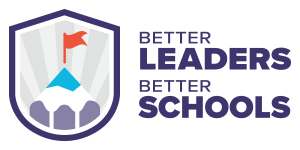
Whether you are a new, aspiring, or experienced school principal, a strong entry plan is important. It helps you find key steps as you start at a new school.
A quick search will show many principal entry plans. But what if you could create a plan that builds trust in your school community?
What if you could show in your plan that, as the new principal, you want to connect with everyone? You can look for ways to improve your school and face challenges together.
Let’s start building a world-class plan …
Not a polished one for a presentation, but a real one.
If you’d like help to start your entry plan, click here. Devote deep work time to exploring the ideas in the template and writing out your plan.
Want help creating your principal entry plan + template?
Principals … Trust Is the Key to Your Success
Before you even begin, consider the foundational element of trust.
A powerful entry plan includes purposeful activities to build trust among stakeholders in the principal’s first year.
In their study, Bryk and Schneider (2003) looked at trust and school performance. They defined trust as something that connects people. This connection helps improve the education and well-being of students.
According to their study, we discover that strong relational trust results in:
- Enhanced teacher support for reforms
- Reduced resistance to change
- Heightened readiness to exert additional effort for students
- Better student learning achievements (Bryk & Schneider, 2003).
Zak’s (2017) study on trust found that workers in high-trust workplaces have lower stress. They also report more energy, higher productivity, and fewer sick days. These employees are more engaged, have greater life satisfaction, and experience less burnout.
Every school could benefit from having more of that!
Just as “When YOU get better … Everyone wins,” when trust flourishes, our schools win.
Building trust with staff and other stakeholders is a key goal of this entry plan. It should be a primary objective for every principal.
Self-care is important here too. Taking care of yourself helps you show up as a healthy, reliable leader in school. You become someone who is steady and makes good decisions (Zenger & Folkman, 2019).
Before School Begins: Lay the Foundation
During this stage, dedicate some time to contemplating the upcoming school year before you start your planning.
This effort will assist you in shaping your mindset as a dependable leader.
Key Points:
- Determine how you will present yourself as a leader and identify potential obstacles.
- Cultivate your core values.
- Investigate the expectations your school holds for you.
- Evaluate yourself using the Ruckus Maker Mindset tool (free download here).
- Consider the operational needs of your site that you are already aware of.
- Create a daily scorecard for your tasks.
Want help creating your principal entry plan + template?
First Week of School: Prioritize Relationships
This stage is the moment to start forming significant bonds. Create a plan to connect with teachers, students, and parents. By learning about the people you serve and sharing about yourself, you show that “People are valued here.”
Key Points:
- Establish accountability for embodying the Ruckus Maker Mindset.
- Develop surveys to understand your community better.
- Strategize on how you will maintain visibility.
- Begin celebrating positive achievements and plan for future celebrations.
Month 1: Eyes & Ears
This stage of the plan focuses on gathering as much information as possible about your school.
Engaging in conversations and making observations are among your most valuable tools. A school principal who listens and observes with genuine intent demonstrates true care for others.
Frei & Morris (2020) wrote, “If people think you care more about yourself than about others, they won’t trust you enough to lead them.”
Your demeanor during this phase can either establish or erode trust. To enhance trust-building, Ruckus Maker principals should set aside their phones and offer their undivided attention to others.
This month, you will gain insights that will be clear successes. You can share these successes with your community right away.
Key Actions:
- Conduct one-on-one interviews with staff, students, and community members to understand the school better.
- Collect existing data from the school.
- Observe classroom activities firsthand.
- Form a culture team.
- Start strategizing on delegating some operational responsibilities.
Month 2: Vision & Goals
In this phase, you look at data from interviews, classroom visits, school records, and surveys. This assists in uncovering significance and identifying opportunities for your educational institution. Patterns and trends will surface from the feedback and data. Choose the top 10 trending issues and share your insights with staff and other members of the school community.Sharing important information openly in our schools shows that you trust your team and are trustworthy.
Use what you have learned. Work with your staff to set goals. Make sure these goals connect to the school’s shared vision and the feedback from interviews and surveys.
Key Points:
- Craft an inspiring vision for your school.
- Collaboratively establish objectives with your team.
- Initiate a monthly recognition program for a team member who exemplifies your school’s values.
Month 3: Planning & Progress
In this concluding stage of your entry plan, collaborate with your school team to decide how you will evaluate your objectives. Break down your overarching goals into detailed plans that guide your team in the right direction. Crucially, all of this is done with the intention of empowering your team to achieve the goals you have collectively set.
Foster trust and equip your team with the necessary tools to perform their tasks with excellence.
Key Points:
- Implement the vision and objectives your team has developed.
- Organize specific celebrations for the 100th day.
- Identify lagging and leading indicators for your objectives.
Want help creating your principal entry plan + template?
Conclusion
This entry plan is just the beginning, the first 90 days on your site.
Prioritize relationships, take care of yourself and your community, and show up with consistency and good judgment (Zenger & Folkman, 2019).
You will be on your way to a high-powered, high-trust school. Go Make a Ruckus!


